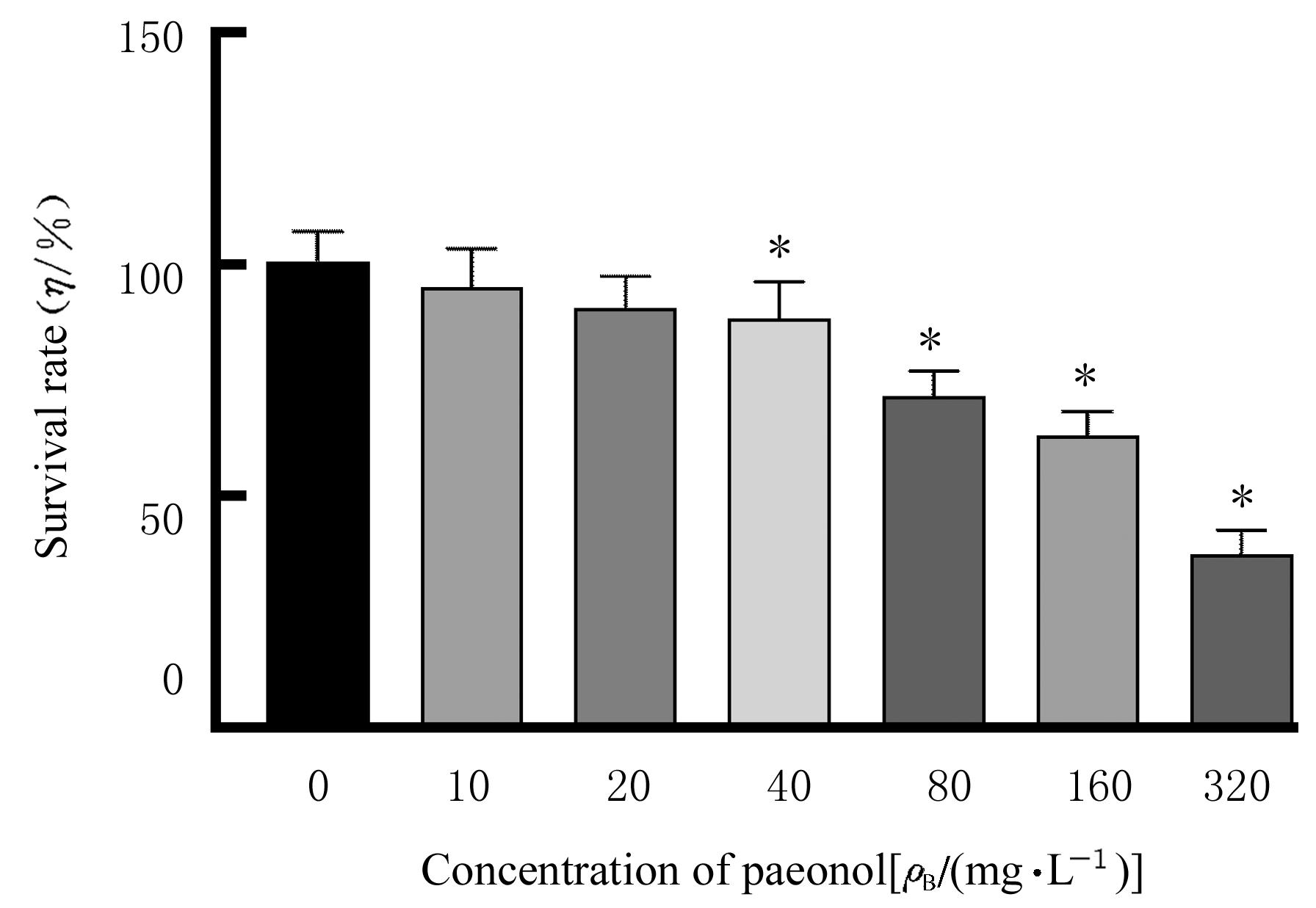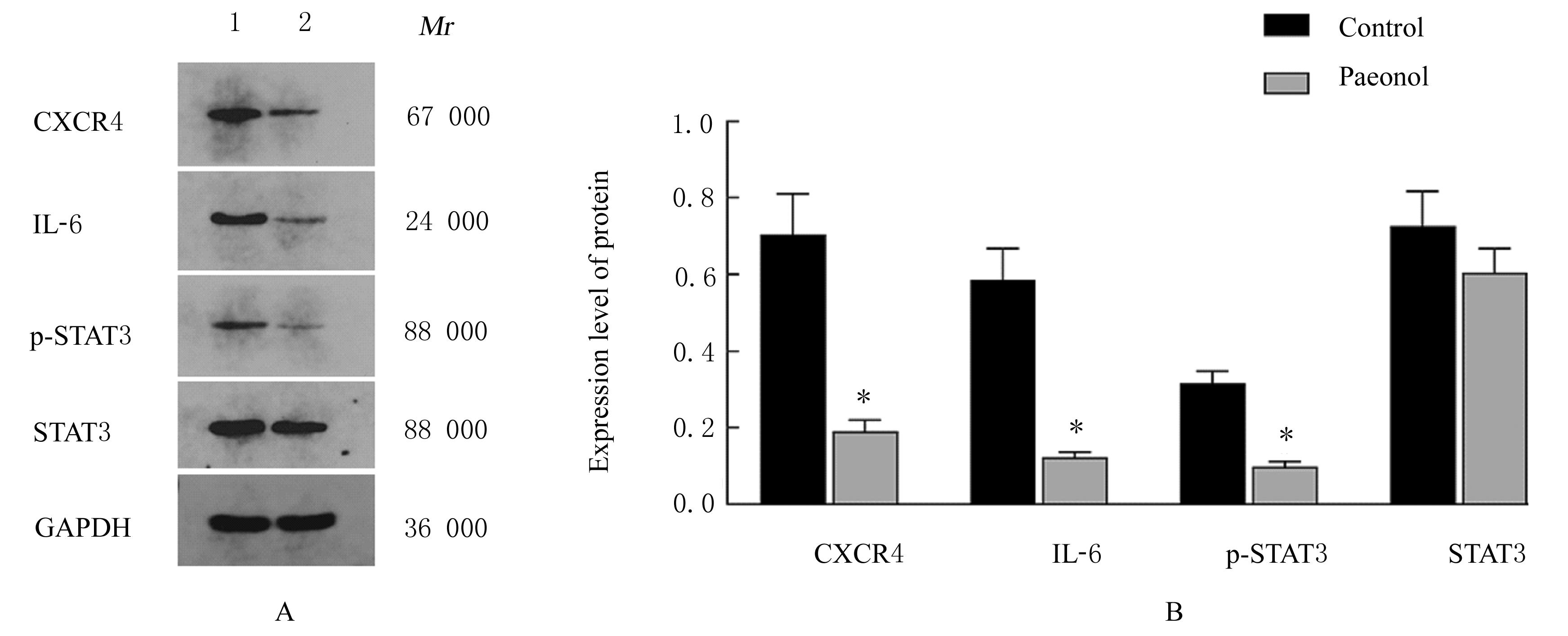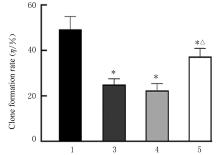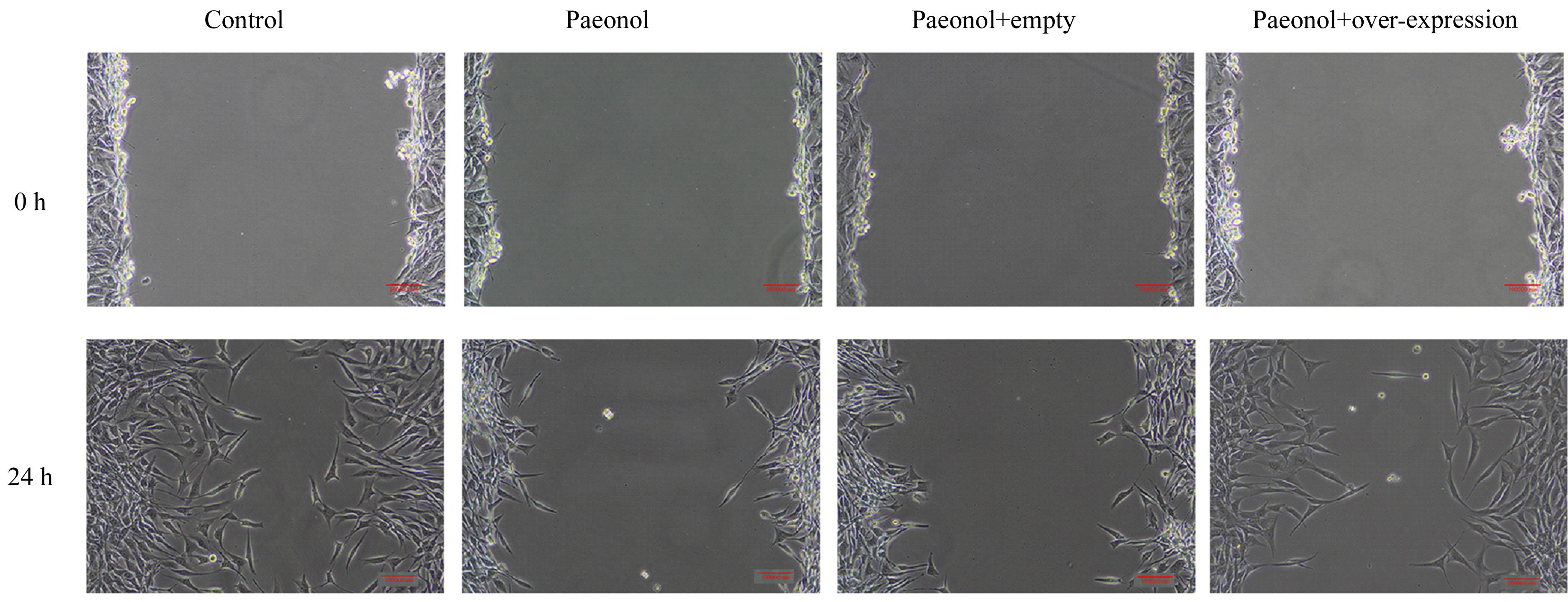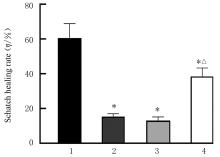| [1] |
Dandan WANG,Ning ZHOU,Dongqin LIU,Jie ZHAO,Chao LIANG,Juanjuan DAI,Yan WU.
Effect of miR-491-5p over-expression on proliferation and migration of human nasopharyngeal carcinoma HONE-1 cells
[J]. Journal of Jilin University(Medicine Edition), 2023, 49(5): 1134-1139.
|
| [2] |
Na NI,Hongliang DONG,Haiyang GAO,Weiwei CHEN,Xinyu MENG,Bingjie CUI,Jing DU.
Construction of human lncRNA-GACAT2 over-expression vector and its effect on proliferation and stemness of lung cancer cells
[J]. Journal of Jilin University(Medicine Edition), 2023, 49(5): 1147-1153.
|
| [3] |
Meng LIU,Xiaodong HUANG,Zheng HAN,Qingxi ZHU,Jie TAN,Xia TIAN.
Effect of cadherin-17 on proliferation and apoptosis of colorectal cancer cells and its PI3K/AKT/mTOR signaling pathway regulatory mechanism
[J]. Journal of Jilin University(Medicine Edition), 2023, 49(4): 1008-1017.
|
| [4] |
Yuanyuan LIANG,Song ZHAO,Jing HU,Ni AN,Yanlu WEI,Rongjian SU.
Effect of motesanib combined with EZH2 inhibitor GSK126 on proliferation and apoptosis of liver cancer Huh7 cells and its mechanism
[J]. Journal of Jilin University(Medicine Edition), 2023, 49(4): 896-904.
|
| [5] |
Yuanying SONG,Jing KAN,Kun PENG,Yue LI.
Effect of honeysuckle extract on proliferation and apoptosis of airway smooth muscle cells in asthmatic model mice
[J]. Journal of Jilin University(Medicine Edition), 2023, 49(4): 1001-1007.
|
| [6] |
Shuya ZHANG,Hongying SUN,Jian MAO,Chengxi MENG,Gelong BA.
Expression of circ_EFCAB2 in epileptic cell model and its mechanism
[J]. Journal of Jilin University(Medicine Edition), 2023, 49(3): 691-696.
|
| [7] |
Jiaojiao XUE,Lei HAO,Yuxiu ZHANG,Heyang DAI,Lixia ZHANG,Shaowei GUO,Jingjing ZHANG,Yang LI,Qingxia LI.
Effect of Huaier aqueous extract on breast cancer tamoxifen-resistant LCC2 cells and its mechanism
[J]. Journal of Jilin University(Medicine Edition), 2023, 49(3): 714-721.
|
| [8] |
Yifei SUN,Dinuo LI,Yubin WANG.
Inhibitory effect of curcumin on proliferation and invasion of gastric cancer MGC-803 cells by down-regulating PI3K/Akt/mTOR signaling pathway protein expression
[J]. Journal of Jilin University(Medicine Edition), 2023, 49(2): 332-340.
|
| [9] |
Kai WANG,Han HUANG.
Effects of atorvastatin on proliferation, apoptosis, and migration of human tongue squamous cell carcinoma CAL-27 cells and their mechanisms
[J]. Journal of Jilin University(Medicine Edition), 2023, 49(2): 324-331.
|
| [10] |
Lijun SUN,Jie FENG,Xiaoming LIU,Guangwei REN,Lin RUAN.
Expression of ADAM10 in vascular tissue at stenosis of human arteriovenous fistula and its effect on proliferation and migration of vascular smooth muscle cells
[J]. Journal of Jilin University(Medicine Edition), 2023, 49(2): 482-491.
|
| [11] |
Junyi JIN,Mu LI,Yaoyuan HU,Yihui WANG.
Targeting relationship between miR-150-5p and NCAPG and its inhibitory effect on hepatocellular carcinoma Huh7 cells
[J]. Journal of Jilin University(Medicine Edition), 2023, 49(1): 122-130.
|
| [12] |
Yanya CHEN,Jinlan ZHAO,Chan LI,Lishan HUANG.
Expression of miR-223 in ovarian cancer tissue and its promoting effect on proliferation and invasion of ovarian cancer OVCAR3 cells
[J]. Journal of Jilin University(Medicine Edition), 2023, 49(1): 150-157.
|
| [13] |
Jie ZHAO,Ning ZHOU,Dongqin LIU,Juanjuan DAI,Dandan WANG,Yan WU.
Effects of up-regulation of protein phosphatase Mg2+/Mn2+-dependent 1F on proliferation and migration of nasopharyngeal carcinoma HONE-1 cells
[J]. Journal of Jilin University(Medicine Edition), 2023, 49(1): 39-45.
|
| [14] |
Xingzhu CHEN,Mingyue YU,Shuang LIU,Jianing LI,Zunxuan XIE,Jinyao LIU,Yuyan LIU.
Remineralization property of fluoride loaded poly (propylene carbonate) dental patch and its cytotoxicity on fibroblast L929 cells of mice
[J]. Journal of Jilin University(Medicine Edition), 2022, 48(6): 1429-1436.
|
| [15] |
Xianshun XIE,Wei WANG,Haibing JIANG.
Effect of miR-431-3p on proliferation and apoptosis of gastric cancer cells and its mechanism of targeted regulation of CTDP1 gene expression
[J]. Journal of Jilin University(Medicine Edition), 2022, 48(6): 1555-1565.
|
 ),Jianfeng CHEN2,Hao LI2,Feng WEN2
),Jianfeng CHEN2,Hao LI2,Feng WEN2

